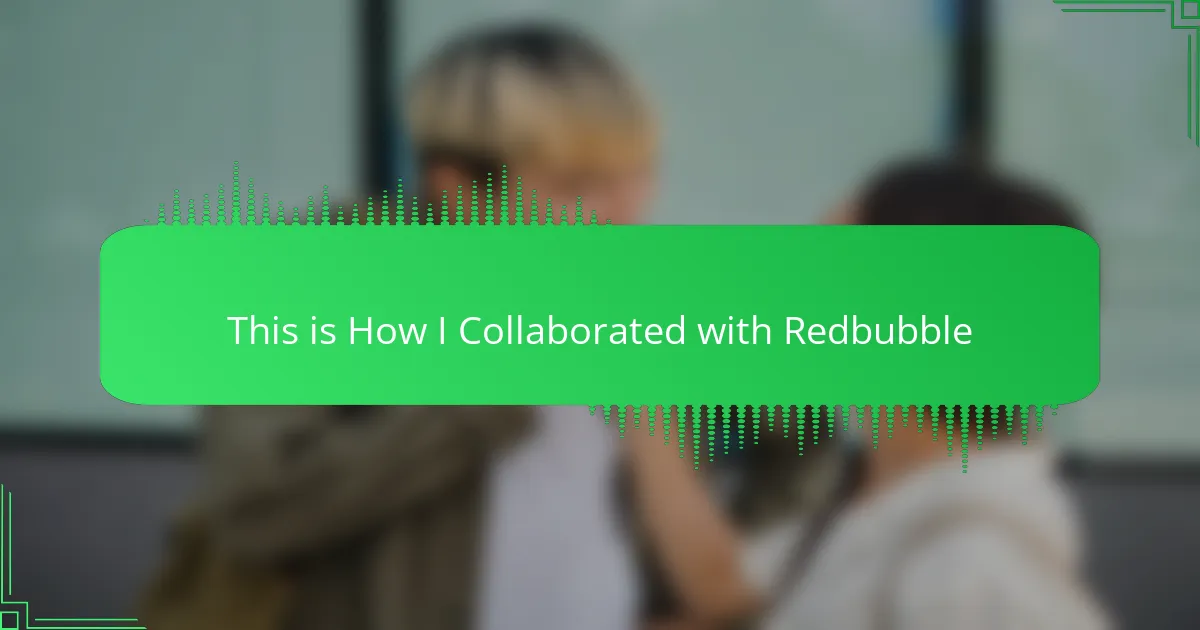Key takeaways
- Good t-shirt design focuses on simplicity, clarity, and high-quality images to attract customers.
- Redbubble simplifies the process of sharing art, allowing creators to focus on design without worrying about logistics.
- Effective promotion involves storytelling, engaging with niche communities, and using high-quality mockups.
- Successful collaboration on Redbubble depends on clear communication, community engagement, and openness to feedback.
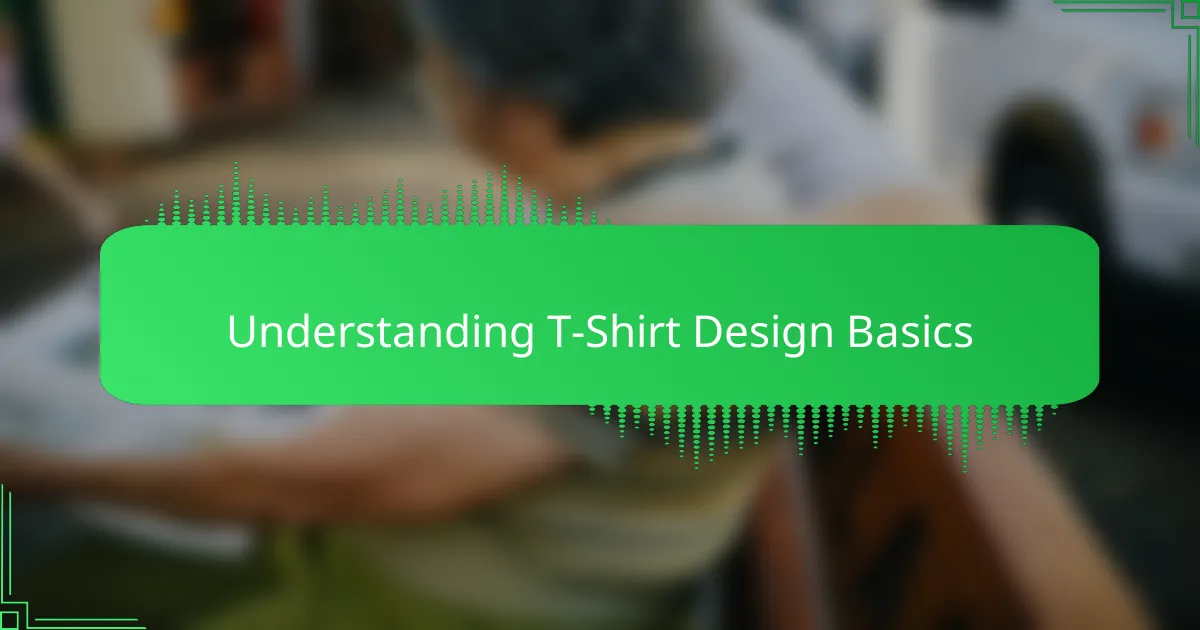
Understanding T-shirt Design Basics
When I first started designing t-shirts, I quickly realized that understanding the basics was crucial. It’s not just about picking a cool image; it’s about knowing how colors, fonts, and layout work together to create something that people actually want to wear. Have you ever looked at a t-shirt and felt instantly drawn to it, almost like it spoke to you? That’s the power of good design fundamentals.
One thing I learned the hard way was how important simplicity is. Early on, I would cram too many elements into one design, thinking more was better. But what I found is that clarity and focus make a design stand out, especially on something as small as a t-shirt canvas.
Also, the quality of your design files matters more than you might think. When I first uploaded my work to marketplaces like Redbubble, low-resolution images made the print look blurry and unprofessional. Paying attention to resolution and file formats saved me from countless headaches and gave my shirts that sharp, polished look customers expect.
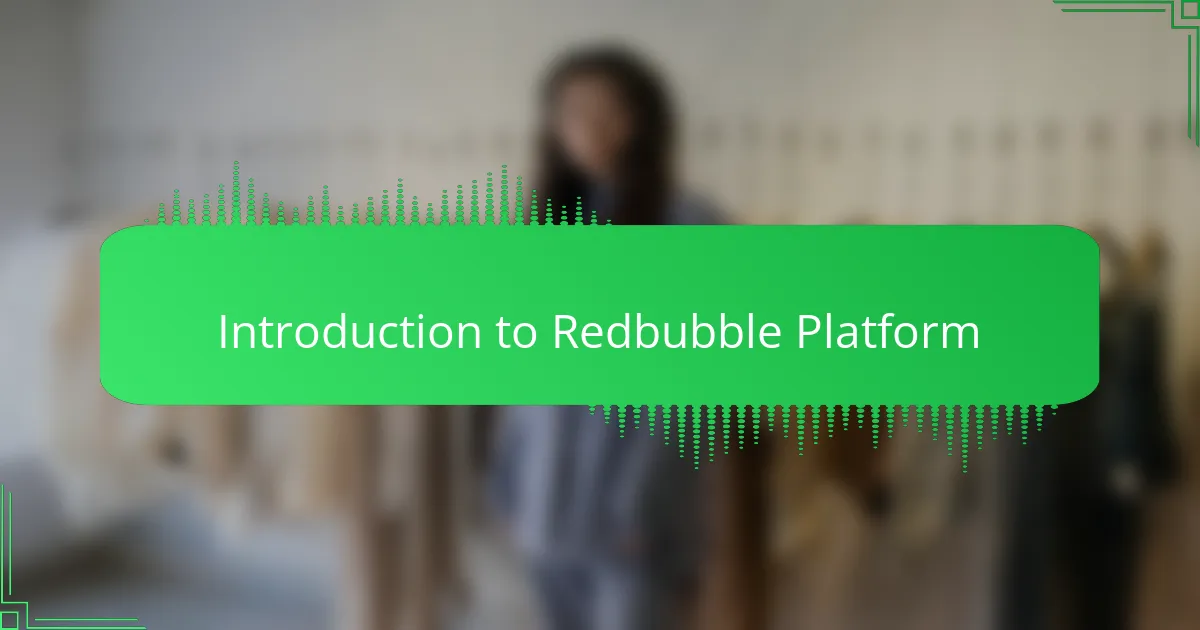
Introduction to Redbubble Platform
Redbubble is one of those platforms that caught my attention because it’s tailored for artists like me who want to share their designs without worrying about manufacturing or shipping. Have you ever wished you could just focus on creating and leave the business side to someone else? That’s exactly what Redbubble offers—a hassle-free way to get your art onto t-shirts and other cool products.
What I appreciate most about Redbubble is how friendly it feels to beginners but also how much creative freedom it allows. Uploading my designs was straightforward, and seeing them live on a variety of products always gave me a little thrill. It’s like watching your art come to life and reach people around the world without me lifting a finger on the logistics.
Of course, the marketplace is crowded, which pushed me to think harder about what makes my designs unique. But knowing that Redbubble takes care of printing and shipping removed a huge layer of stress and let me focus on what I love most—designing. Wouldn’t you agree that having that kind of support can make all the difference when starting out?
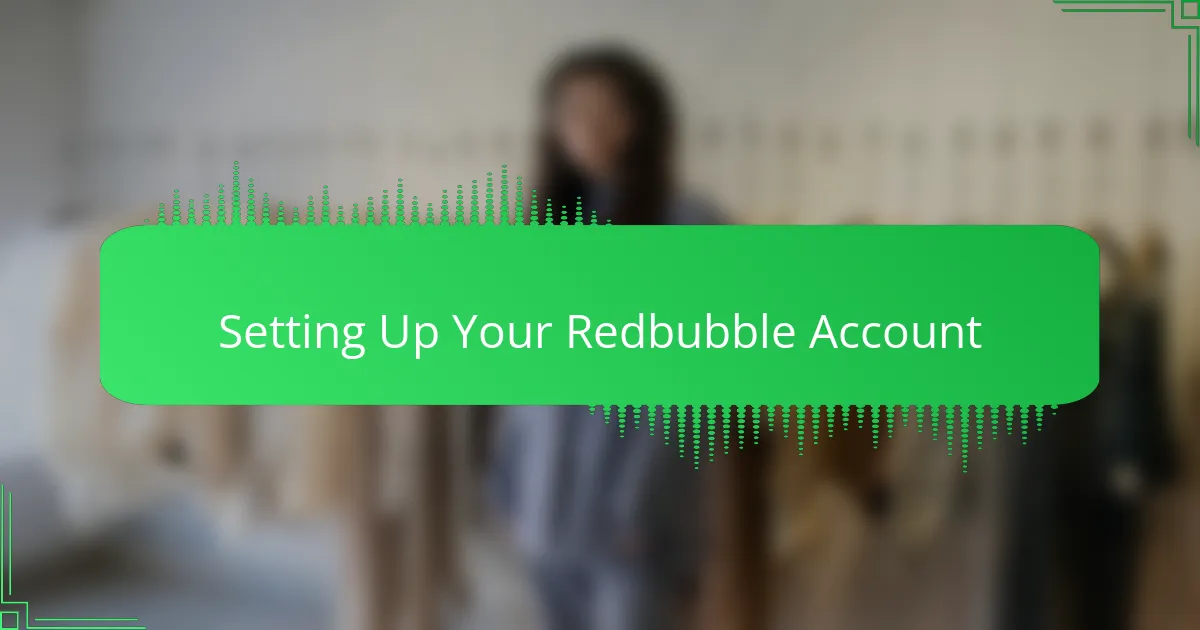
Setting Up Your Redbubble Account
Setting up my Redbubble account was surprisingly simple, but I did learn that taking the time to fill out the profile details carefully makes a big difference. Have you ever noticed how a complete profile makes you feel more connected to a creator? That’s exactly how I wanted potential buyers to feel when they visited my page.
Uploading my first design felt like a small victory—I still remember that mix of excitement and nervousness, wondering if anyone would notice. Redbubble’s step-by-step prompts helped me avoid common mistakes, like forgetting to tag designs properly or missing out on choosing the right product options.
One tip I picked up along the way is to spend extra time customizing your storefront. At first, I overlooked this, but then I realized a personalized look makes your brand stand out. Isn’t it amazing how small touches can build trust and invite people to explore more of your art?
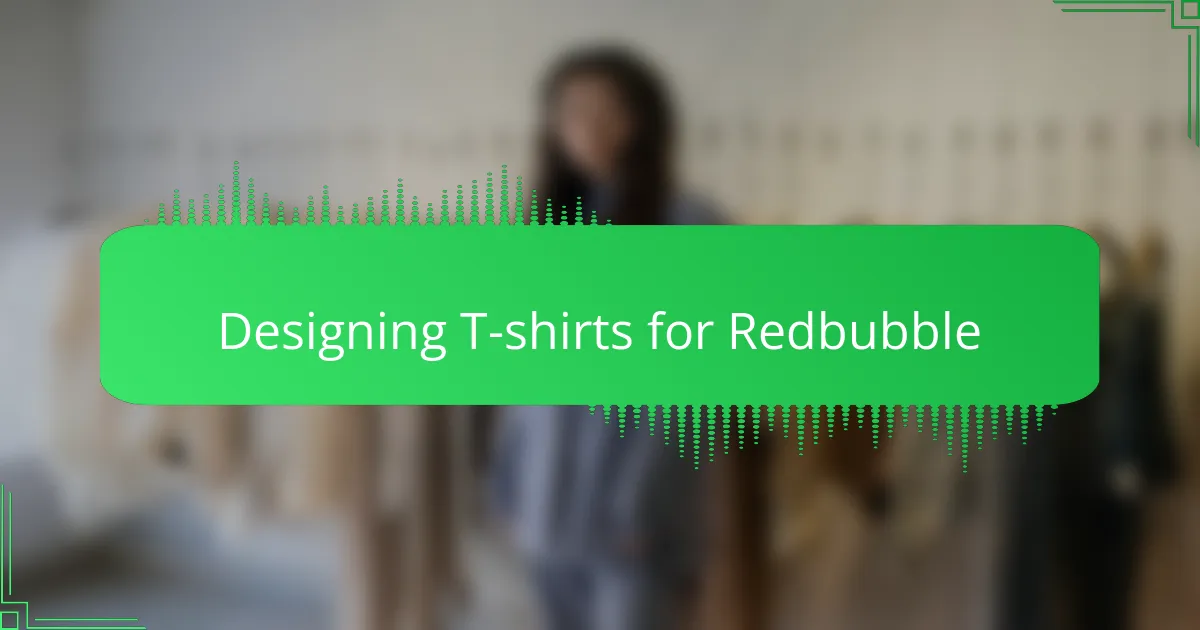
Designing T-shirts for Redbubble
Designing t-shirts for Redbubble taught me that every design needs to speak clearly through a small space—your canvas is limited, so each element must count. Have you ever struggled to fit your creativity onto a single shirt? I found that focusing on a strong central idea helped me communicate better and grab attention.
One challenge I faced was adapting my digital art to suit Redbubble’s printing style. The colors sometimes appeared different on fabric than on my screen, which was frustrating at first. But I learned to preview designs in Redbubble’s mockup tools, tweaking hues and contrasts until they felt just right—trust me, that extra effort makes a huge difference.
Finally, I discovered that staying true to my style while keeping an eye on what appeals to the community was key. How do you balance originality and market trends? For me, blending personal passion with what I know buyers enjoy has been the sweet spot that keeps me motivated and successful on the platform.
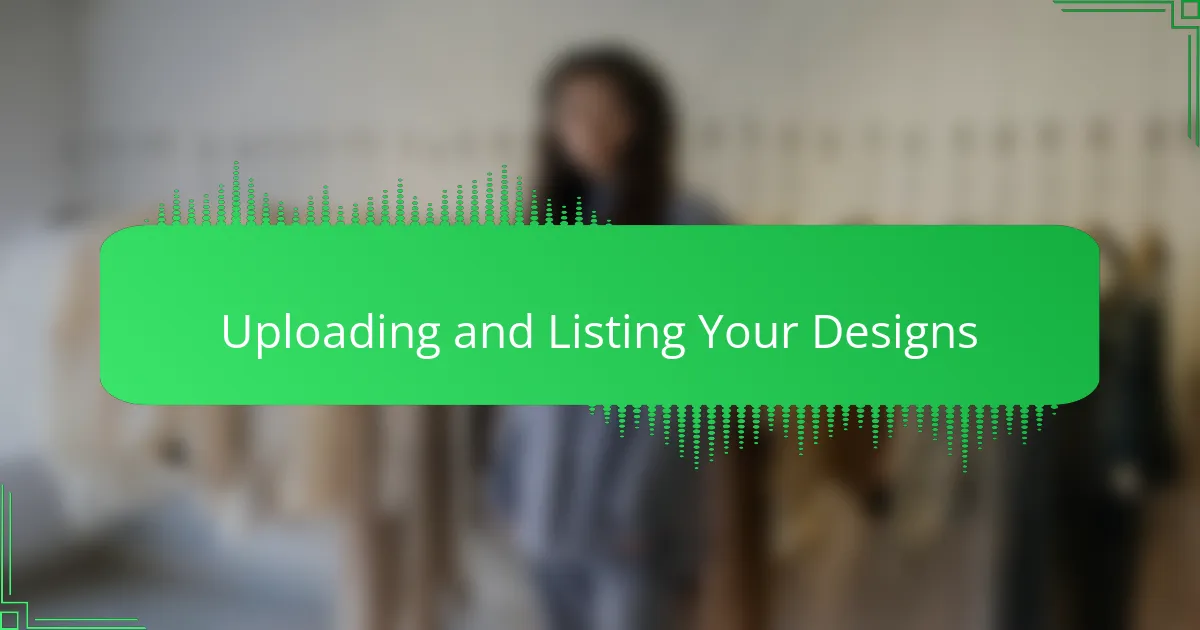
Uploading and Listing Your Designs
Uploading my designs to Redbubble was surprisingly smooth, but I quickly realized that a few details made all the difference. Have you ever hesitated before hitting that upload button, wondering if everything looks just right? For me, double-checking the resolution and file format helped avoid blurry prints—something I learned the hard way at first.
Listing your designs goes beyond just putting them up there. Crafting clear, catchy titles and thoughtful descriptions felt like telling a story to potential buyers. I found myself asking: What would make me want to click on this shirt? Adding relevant tags also became a little art of its own, helping my work show up in the right searches and reach people who’d genuinely appreciate it.
One thing I didn’t expect was how empowering it felt to watch my designs appear live on various products. It’s like giving life to those pixels and seeing them ready for the world—an emotional moment every time. Has that thrill ever surprised you too? For me, that’s when all the preparation suddenly clicked, making the upload and listing process not just a task, but a rewarding part of my creative journey.
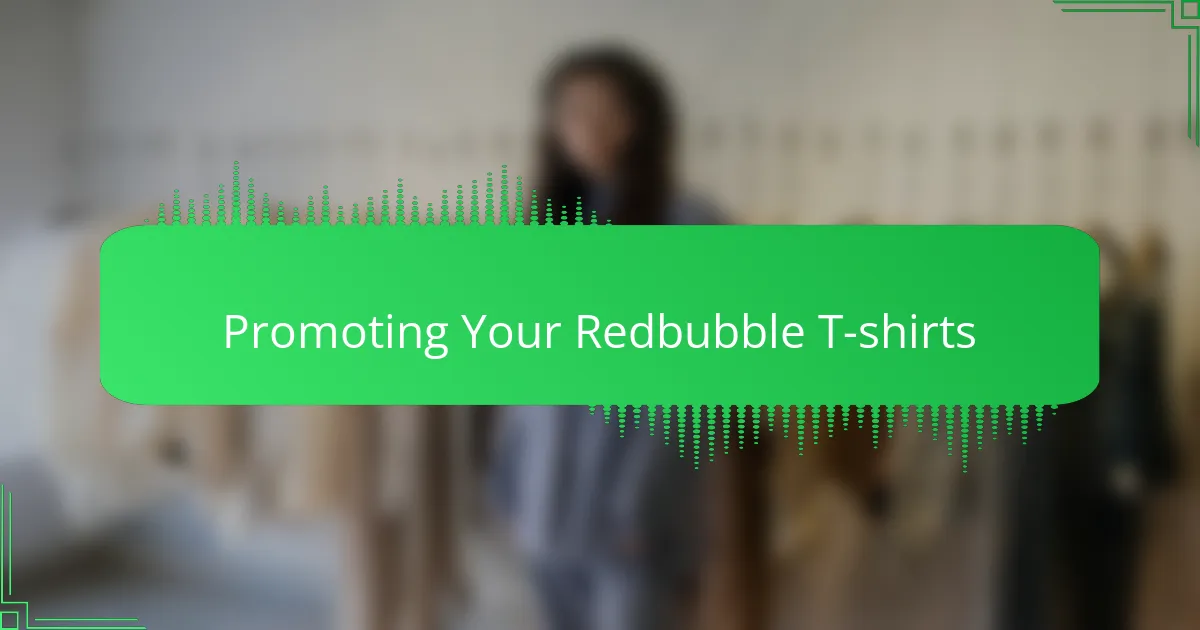
Promoting Your Redbubble T-shirts
Promoting your Redbubble t-shirts isn’t just about sharing a link; it’s about telling a story that makes people want to wear your art. I found that using social media to show the behind-the-scenes of my design process made followers feel connected, turning casual scrollers into eager buyers. Have you ever experienced how a simple Instagram story or an engaging post creates real buzz around a design?
Another tactic that worked well for me was tapping into niche communities where my style really resonated—forums, Facebook groups, or even Reddit. It felt rewarding to join conversations and share my passion authentically rather than just dropping a product link. When you genuinely engage, people notice and support your work, which is something I learned the hard way after trying to promote blindly at first.
Lastly, I can’t stress enough how important product presentation is in promotion. High-quality mockups and showing your t-shirts in real-life settings made my designs feel tangible and desirable. I often asked friends to model my shirts or created lifestyle shots; it added personality and helped buyers imagine the shirt as part of their wardrobe. Do you think seeing a design worn by someone else influences your own purchasing decisions? For me, it definitely did.
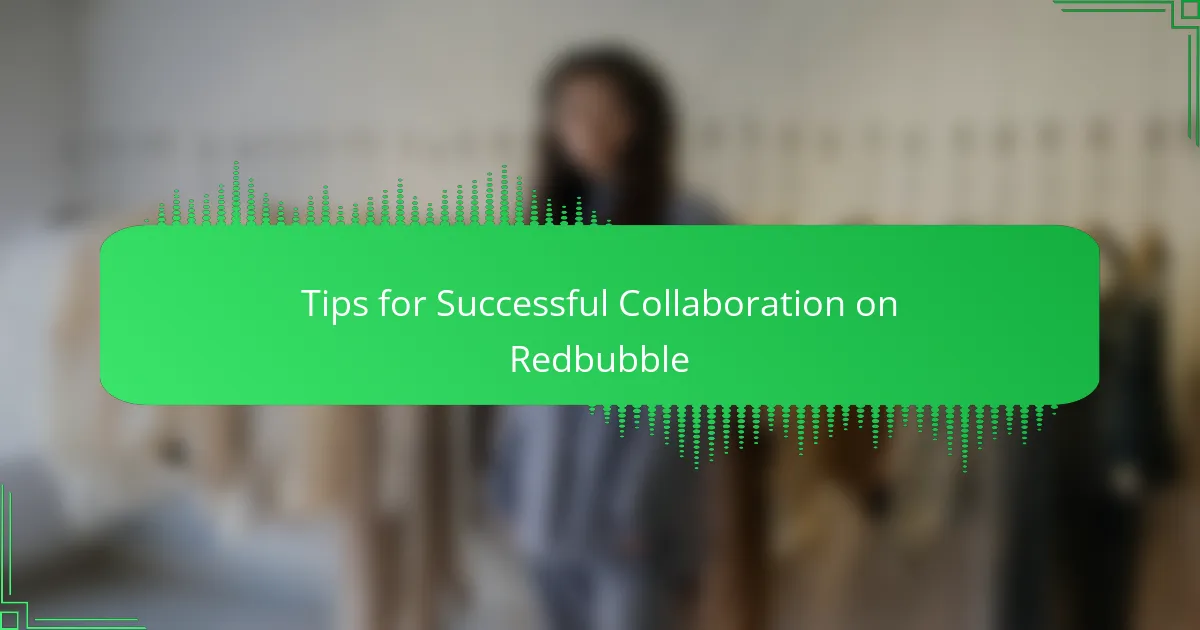
Tips for Successful Collaboration on Redbubble
One thing I quickly learned about collaborating successfully on Redbubble is the importance of clear communication. Whether you’re working with other artists or clients, making sure everyone understands the vision and expectations prevents misunderstandings. Have you ever had a project go off track because someone wasn’t on the same page? Being upfront and transparent saved me from those headaches more than once.
Another tip that really made a difference was leveraging Redbubble’s community features. Engaging with other designers, leaving feedback, and participating in forums helped me find inspiration and also opened doors to potential collaborations. It’s amazing how a simple comment or message led to partnerships that boosted my designs’ reach. Sometimes, all it takes is starting that conversation.
Lastly, patience and flexibility are key. I remember feeling frustrated early on when my collaborative projects didn’t instantly skyrocket in sales, but persistence eventually paid off. Listening to constructive criticism and being willing to tweak designs based on feedback created stronger, more marketable products. Have you noticed how those small adjustments can turn a good design into a great one? Trust me, embracing that process makes collaboration on Redbubble not just successful, but genuinely rewarding.
